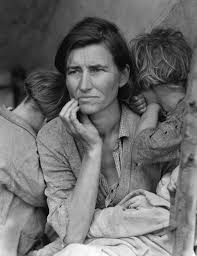I think in Camera Lucida, Roland Barthes brought up two ideas that really resonated with me. Firstly, there was the concept of the studium and the punctum and how they were part of every photograph (albeit different for each person) and secondly, there was this idea that a photograph is forever linked to its subject matter and how people tend to read photographs as an accurate and direct representation of their subject matter as opposed to other forms of art where the artist is largely responsible for the contents of the final piece.
I appreciated that Barthes acknowledged that while all photographs are packed with many different meanings and readings (the studium), the punctum is very subjective meaning that there really is no such thing as a good or bad photograph. Barthes anecdote to explain this talks about how there is a picture of his (then recently-deceased) mother that he thinks perfectly embodies everything his mother was (in his eyes), but it would not mean anything to most people reading the book since we don’t share the same relationship with the subject matter. When I thought about this idea more, I realized that earlier this semester, I had actually had the reverse of this scenario happen. I took a picture of my friend lying on his couch in his pajamas, and I thought it was a pretty bad photo because to me, the only thing I read immediately from it was what is described above. However, Lara, not knowing who my friend was or where he was in the photo, loved the photograph because she was able to see details and nuances in the photo that I had missed because I had already initially read the photograph as just my friend on a couch and wrote it off as a meaningless picture.
On the note of the photo of Barthes’ mother and how this photo could encapsulate the essence of who his mother was to him, it’s interesting how this means that everybody has a different image of everybody in their heads and how it’s likely that the photograph that I thought was the quintessential depiction of person X is different from the photograph that person X thinks perfectly captures their own essence. Tying this into today’s world and its heavy use of social media, it’s interesting to see the types of pictures that people post and how it shows what they think their essence is. The selfie is a strange concept because you are both the photographer (not in the sense of the photo composer, but actually the person seeing “through the lens”) and the subject matter creating this unprecedented situation where the subject matter can control exactly what they look like. When people posts pictures of activities they did the past weekend on social media, the entire concept is criticized for creating a life for yourself that is overly-perfect, overly-dramatic, etc. — basically, it is likely that your actual life differs from how it is portrayed on social media. However, the selfie allows it to go deeper than that. When you post a selfie on social media, you are posting a portrait of yourself that captures the essence of who you think you are or who you want to be. At least for younger people, their social media persona is largely a part of their real-life persona and how people perceive them and this means that by posting enough selfies, someone can start to change how someone else sees them in essence. I’m not entirely sure what the implications of this are, but it is a testament to how much social media has assimilated itself into the real world.



